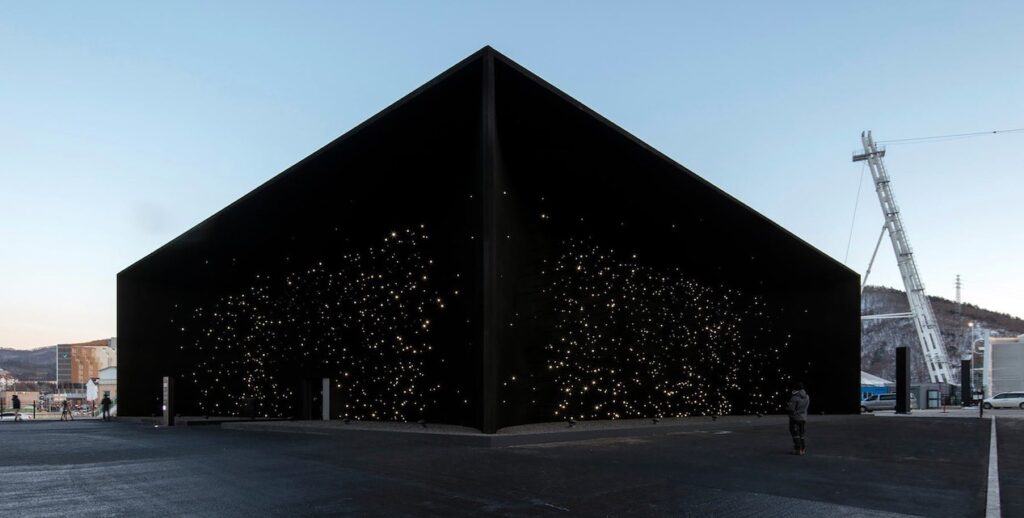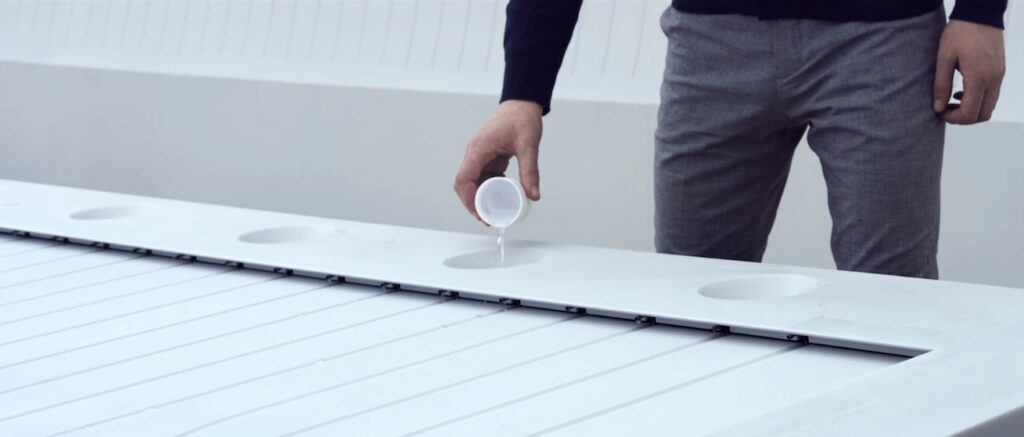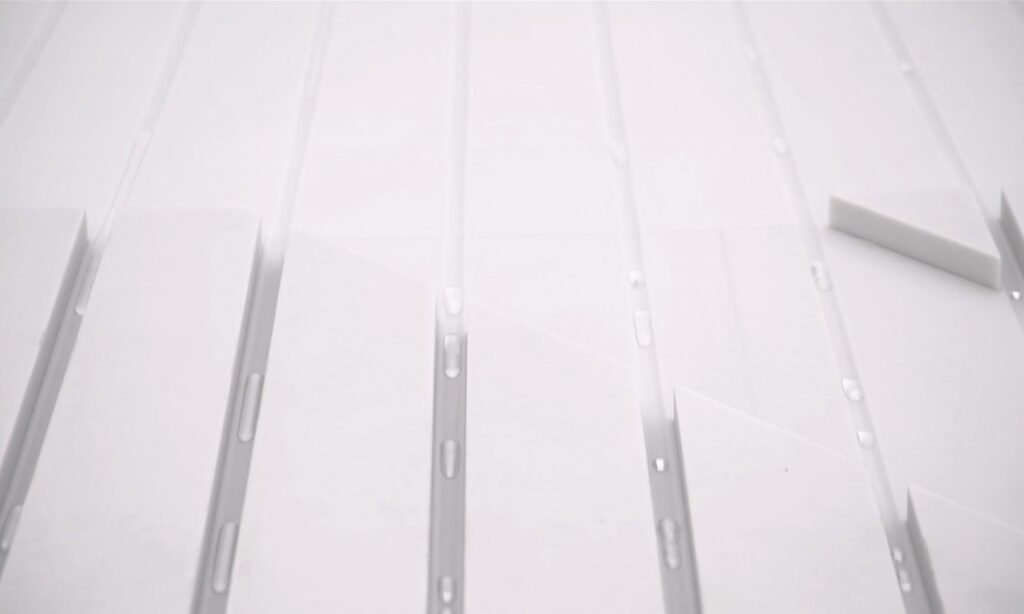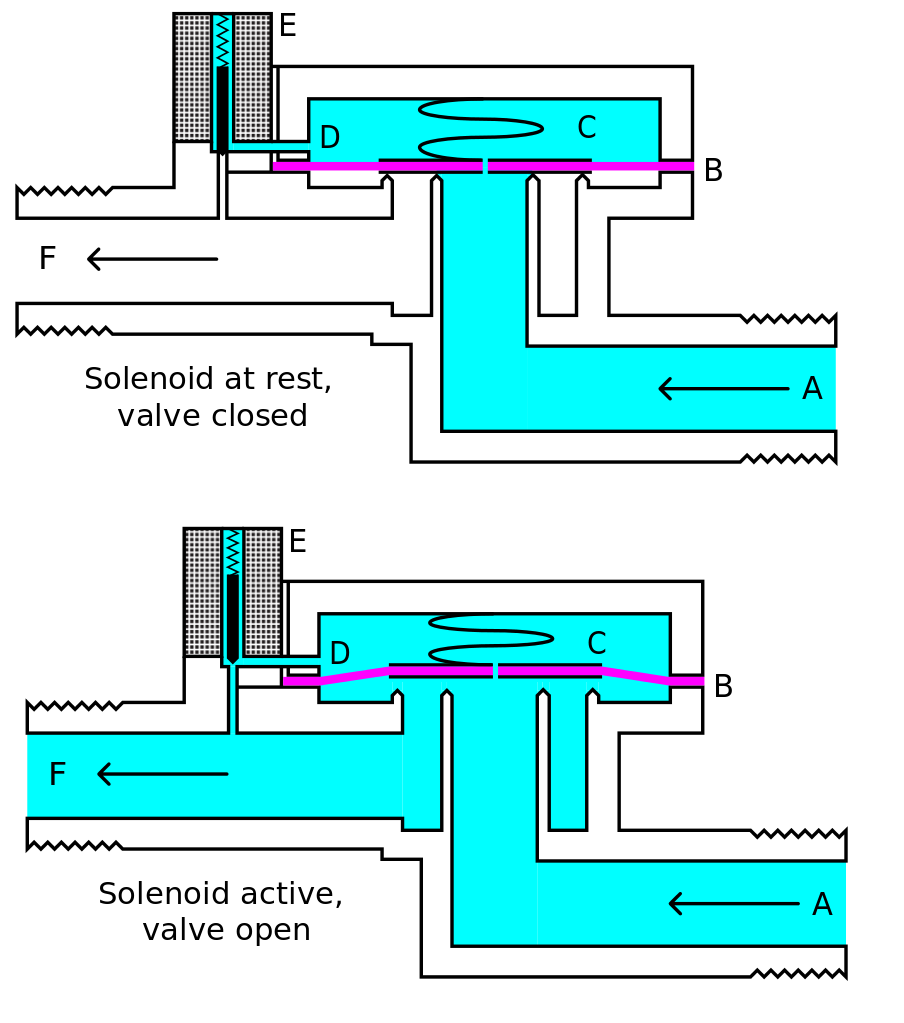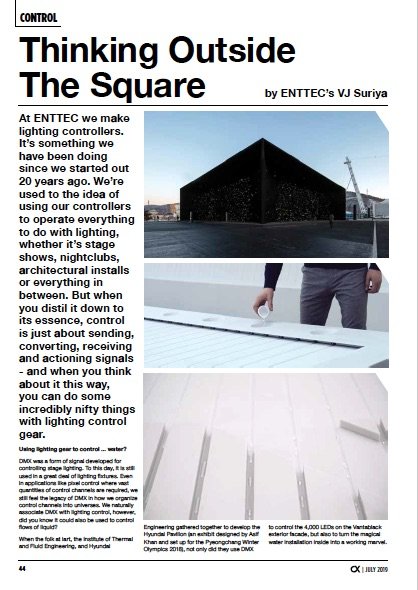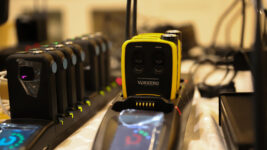News
2 Aug 2019
Thinking Outside the Square
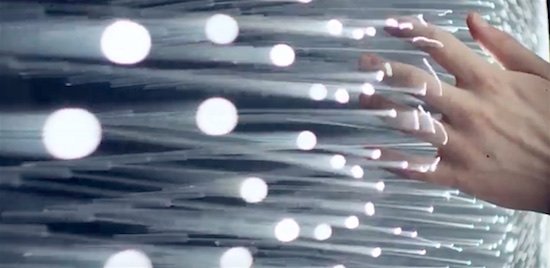
Subscribe to CX E-News
CONTROL
Thinking Outside the Square
by ENTTEC’s VJ Suriya.
At ENTTEC we make lighting controllers. It’s something we have been doing since we started out 20 years ago. We’re used to the idea of using our controllers to operate everything to do with lighting, whether it’s stage shows, nightclubs, architectural installs or everything in between. But when you distil it down to its essence, control is just about sending, converting, receiving and actioning signals – and when you think about it this way, you can do some incredibly nifty things with lighting control gear.
Using lighting gear to control… water?
DMX was a form of signal developed for controlling stage lighting. To this day, it is still used in a great deal of lighting fixtures. Even in applications like pixel control where vast quantities of control channels are required, we still feel the legacy of DMX in how we organize control channels into universes.
We naturally associate DMX with lighting control, however, did you know it could also be used to control flows of liquid?
When the folk at iart, the Institute of Thermal and Fluid Engineering, and Hyundai Engineering gathered together to develop the Hyundai Pavilion (an exhibit designed by Asif Khan and set up for the Pyeongchang Winter Olympics 2018), not only did they use DMX to control the 4,000 LEDs on the Vantablack exterior facade, but also to turn the magical water installation inside into a working marvel.
The problem with valves
When we send DMX to a light fitting, it reacts according to how it has been programmed. As you slide a fader up, the signal comes in, electrons bounce around the circuitry, and the net result is the parameter controlled
by that fader, changes.
This is all a function of how the light fitting is programmed – it is programmed to respond to DMX, so when it receives those signals, it responds accordingly. That is all fine for lighting, but you would be hard pressed to find a control valve that responds specifically to DMX signals, or even Art-Net for that matter!
So how do we make the jump from DMX signal to flow control?
A common device used to control air or water flow is a solenoid valve. This is a valve that is actuated by … a solenoid. That is, when it receives an electric current, it powers the solenoid which is like a simple electromagnet.
That magnetic field which has now just been switched on, pulls or pushes on a ram inside the valve which then opens or closes the valve.
How a solenoid valve works
DMX drivers: the crucial link
A DMX signal by itself is not enough to open or close the solenoid valve. These valves usually require a certain voltage and current to actuate. For example, you might buy a 12V solenoid valve, a small unit might draw 320mA to actuate, so a signal by itself won’t work. Therefore, you need a way to convert the signal, into a current adequate to power the solenoid.
Luckily, devices that do exactly this already exist in the form of DMX drivers. Also called DMX decoders, these devices are typically used to power LED strips. They receive a DMX signal, and correspondingly send power to the appropriate terminal on the LED tape/modules.
We can use this same device, and instead of wiring it to the red/green/blue terminals on a strip of LEDs, it would be wired to the solenoid valve, so that upon receiving a DMX signal, the driver would send current to the valve, thus actuating it!
How does it all come together?
The folks at iart rigged up a system something like this:
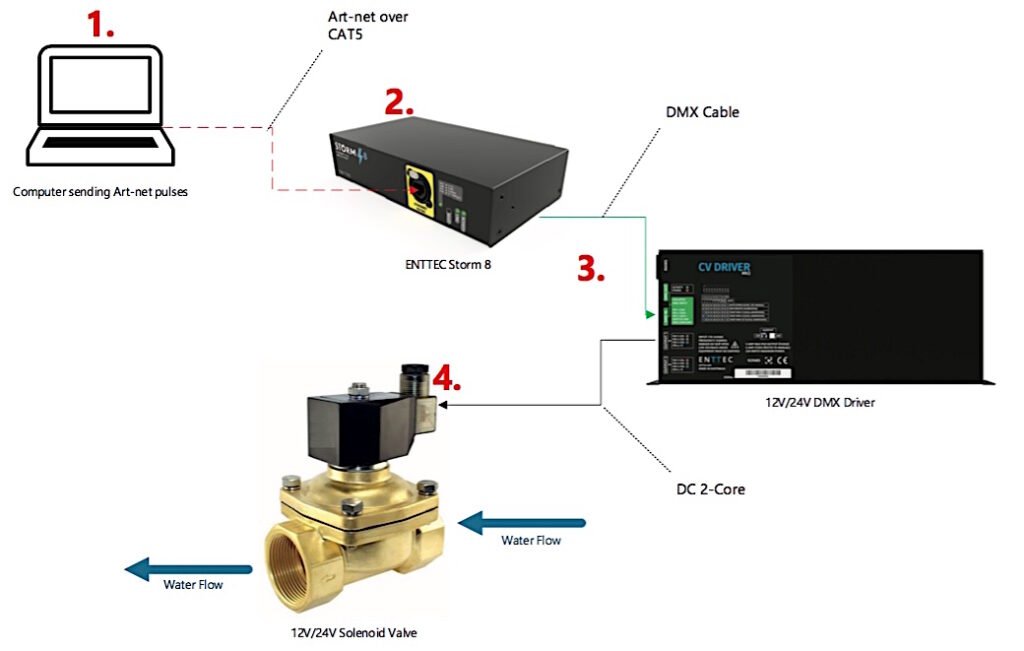
The portion of their installation related to water flow was an extensive array of tubes and channels that created a live, interactive experience for participants. Water was released via the solenoid valves onto a huge sculpture covered in a hydrophobic coating to keep the water droplets in constant motion.
You can see a complete video here: https://youtu.be/l9v15HZPD5A
Due to the vastness of the installation in the number of LEDs and valves to be controlled, the designers chose to control this using Art-Net, hence the requirement for the ENTTEC Storm 8 to complete the Art-Net to DMX conversion, both to send DMX for controlling the lights on the pavilion, as well as the water valves.
We can follow the signal flow through the diagram above.
1. Software was used to generate pulses of Art-Net data.
2. This Art-Net data was sent out to the Storm 8 which would convert this to DMX signals.
3. The DMX signals would be fed into the various DMX drivers located around the installation.
4. The drivers, upon receiving the DMX signal would inject power into the solenoid valve, forcing it to open, and then snap shut when the pulse of Art-Net (which was a pulse of DMX after the Storm 8) stopped.
Things to keep in mind
The coordination between water valves, LED lights and the overall design of the pavilion led to an award-winning result for all involved. However, it is important be aware of safety considerations when doing anything like this.
The water flow in the Hyundai Pavilion was controlled using relatively low-pressure water, and only produced quite small droplets. If there were errant data spikes, there was nothing especially catastrophic that could have happened.
We need to keep in mind that DMX is a simple form of signal that is not error-checked. That is, whatever packets of data get sent, are simply sent, without any acknowledgement from the receiving device to confirm the accuracy of the data packets.
How many times have we been connecting some lights up when one randomly lights up for seemingly no reason? It’s fine when that is just an errant light turning on, but imagine if that was a high-pressure water line? And instead of a light, that was a solenoid valve?
We need to keep in mind that DMX was designed for controlling lights, and apart from some rotation and tilt functions on moving head lights, it is not necessarily the best protocol for controlling moving objects, especially when people are nearby, so remember to stay safe! But, the point is, you can achieve almost anything if you put your mind to it.
So, get creative and never be afraid to think outside the square. You’re always welcome to talk to us via enttec.com if you have any ideas that you might like to turn into reality.
CX Magazine – July 2019 Entertainment technology news and issues for Australia and New Zealand – in print and free online www.cxnetwork.com.au
© CX Media
Lead image via HyundaiWorldwide
Subscribe
Published monthly since 1991, our famous AV industry magazine is free for download or pay for print. Subscribers also receive CX News, our free weekly email with the latest industry news and jobs.

